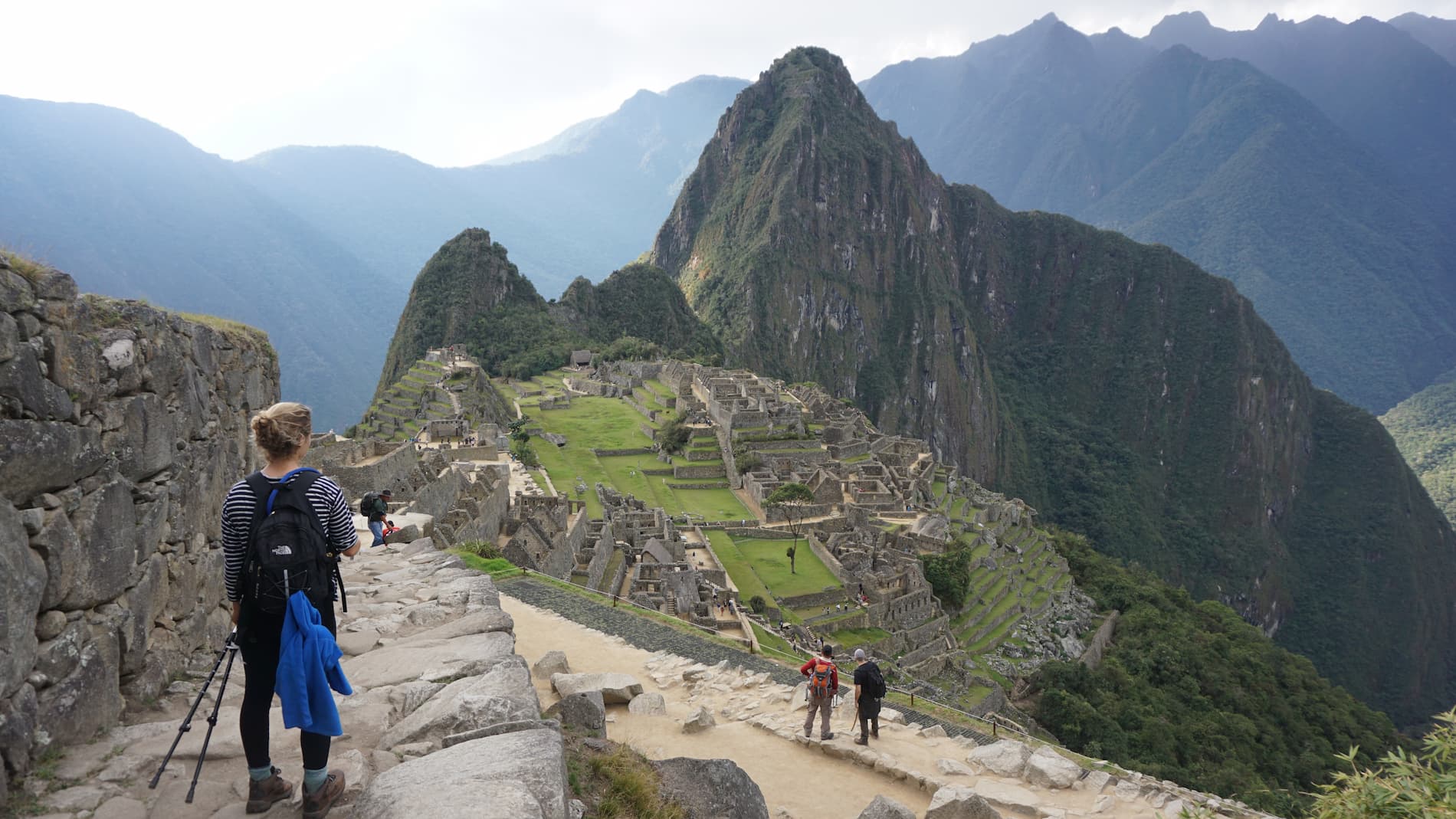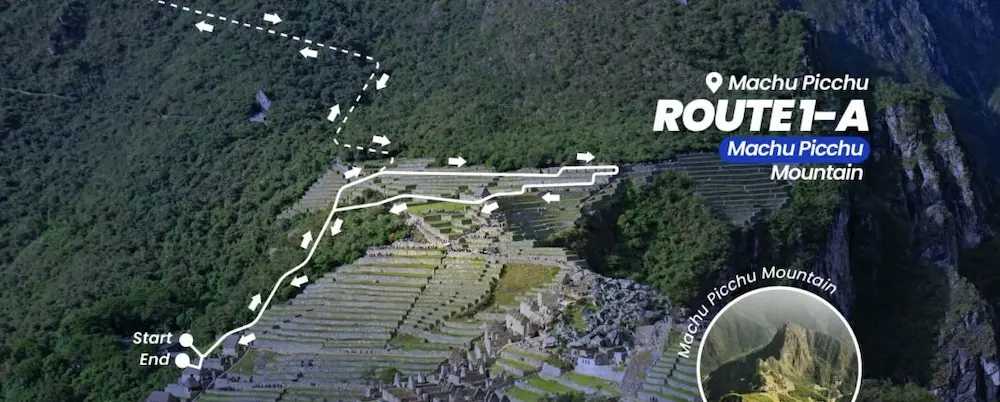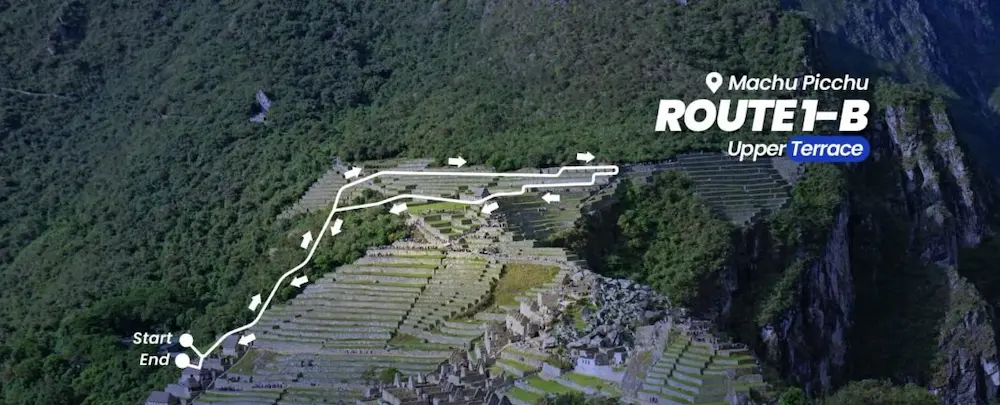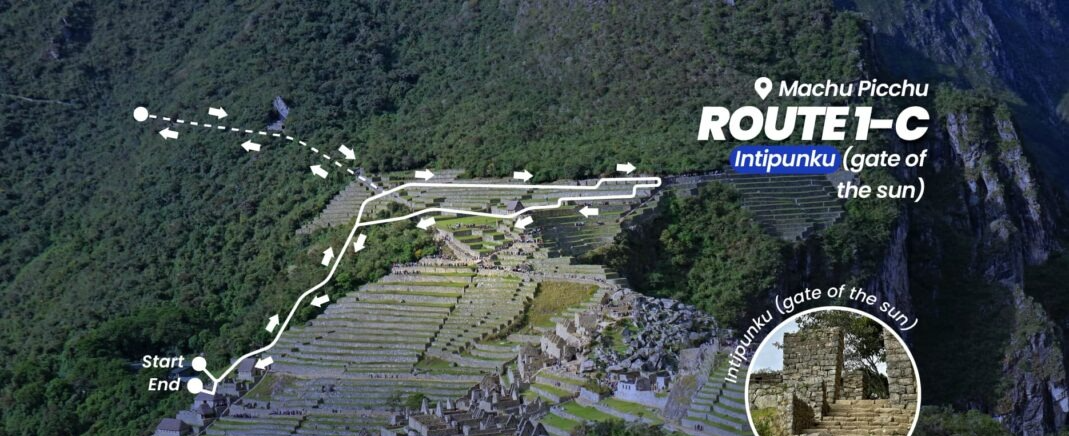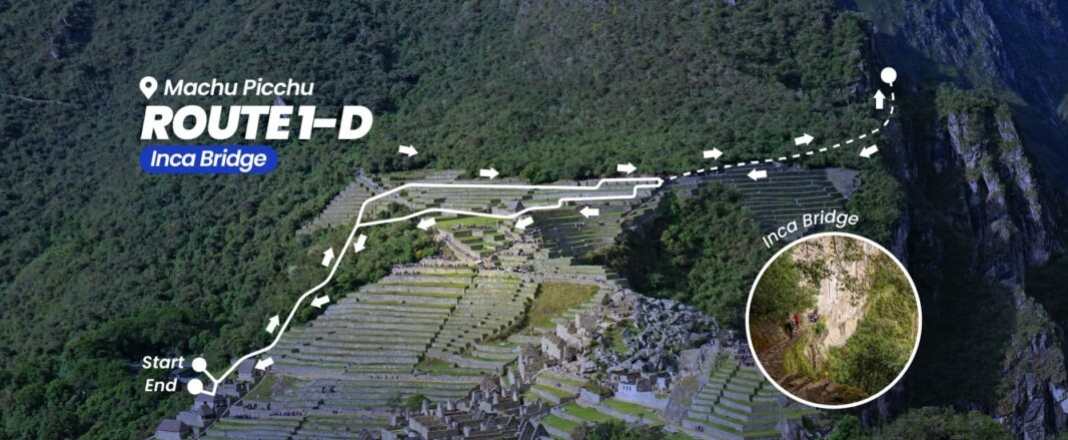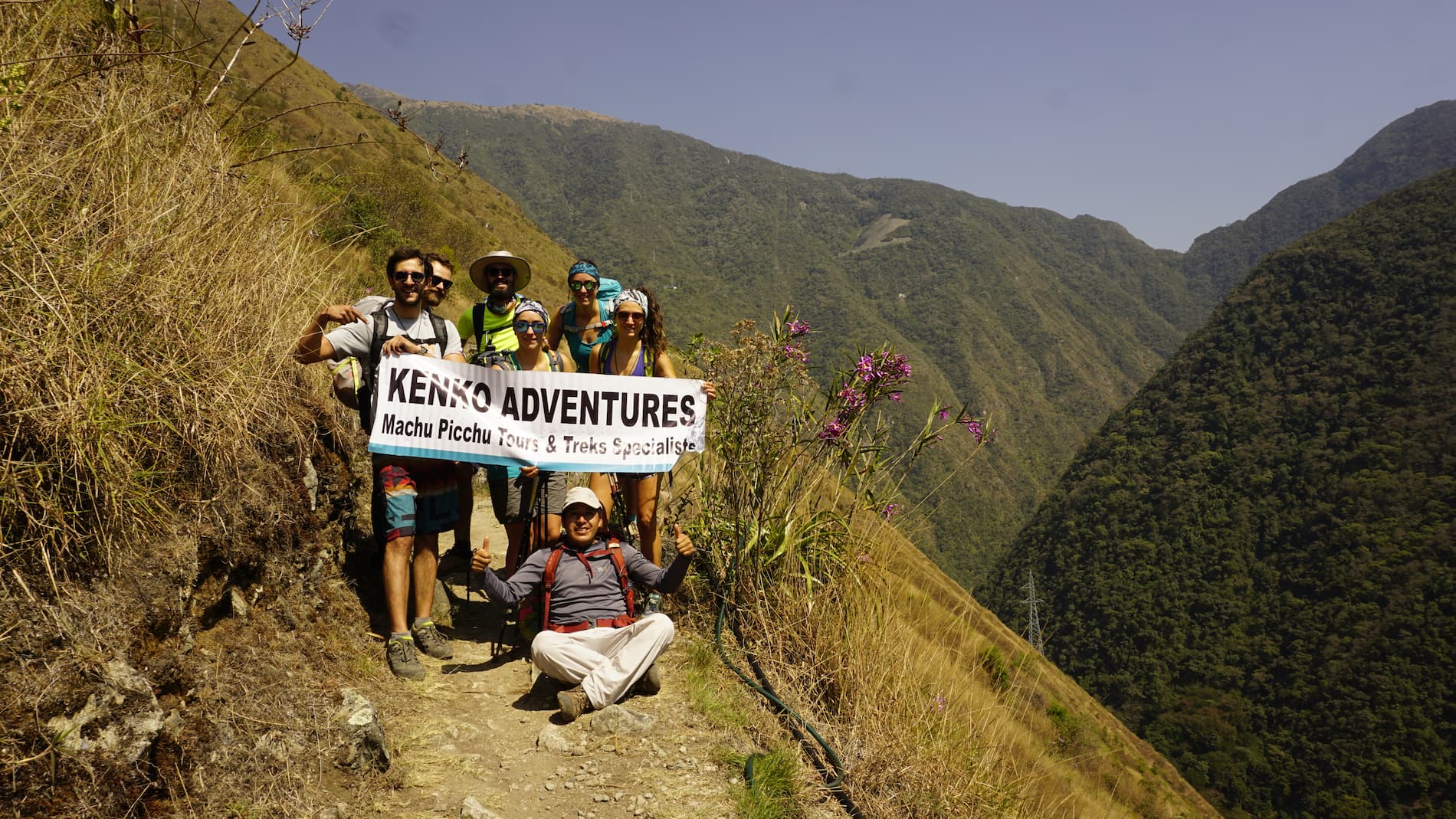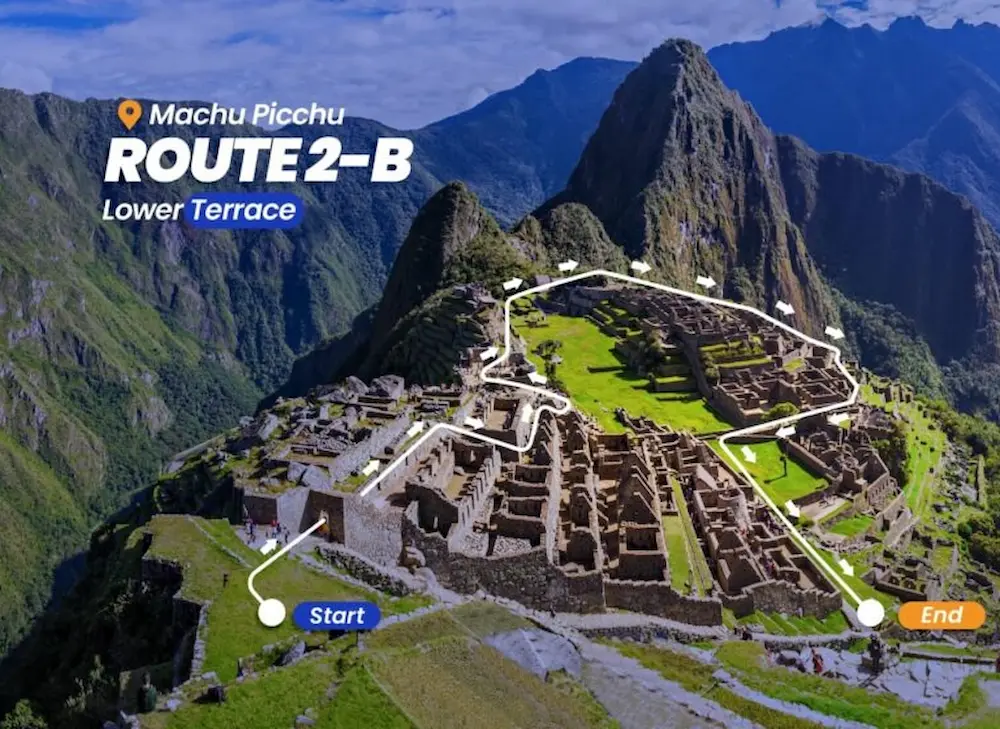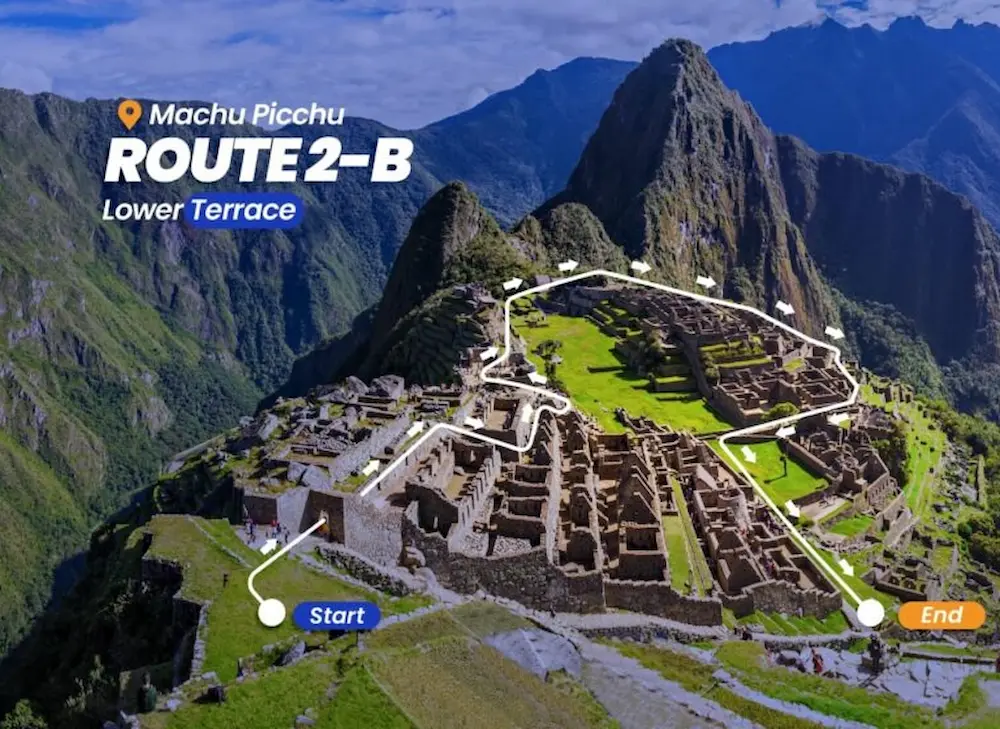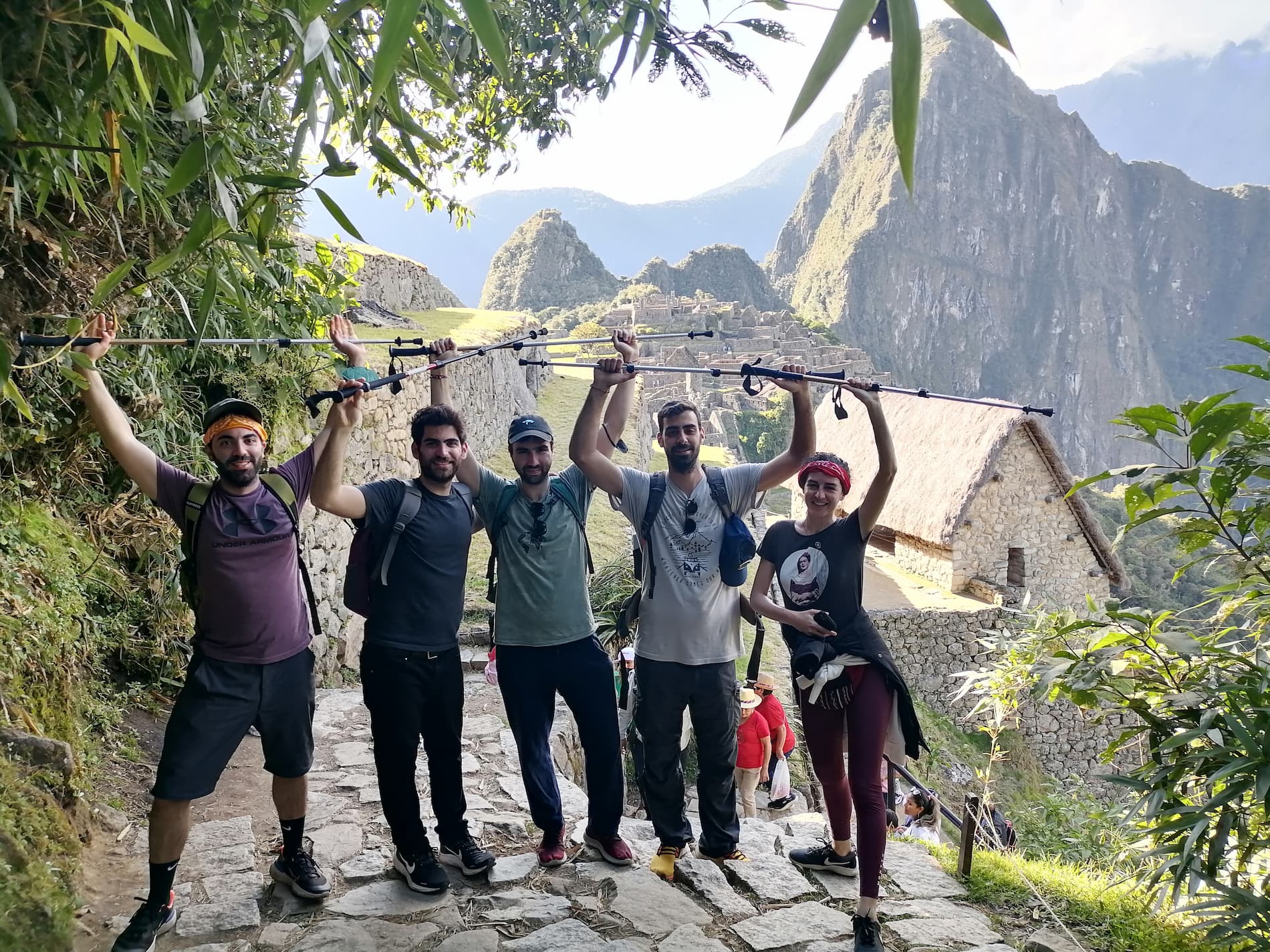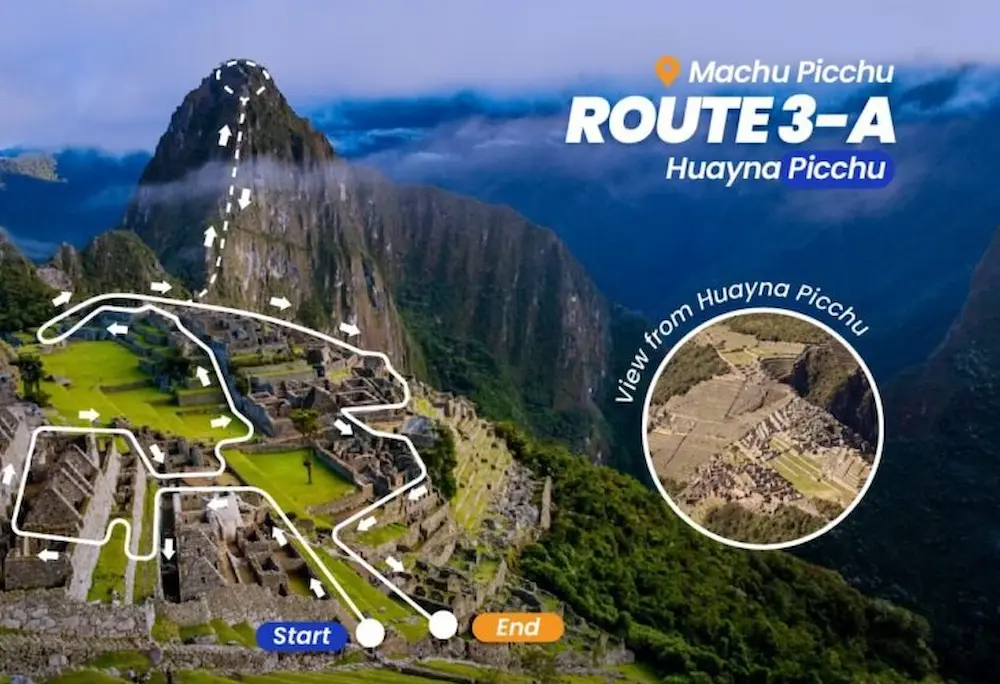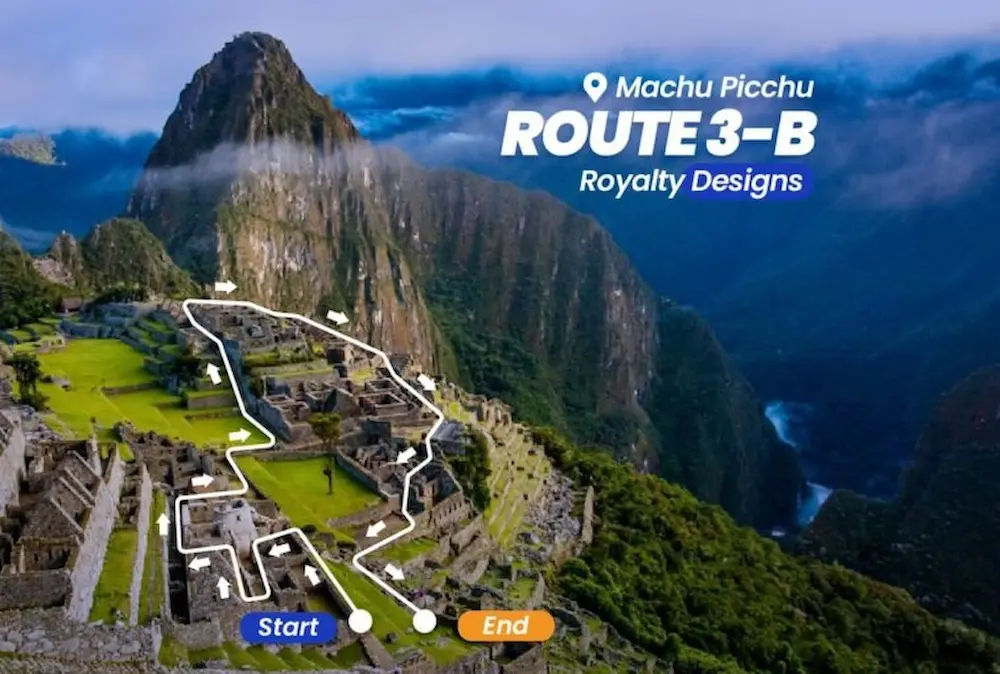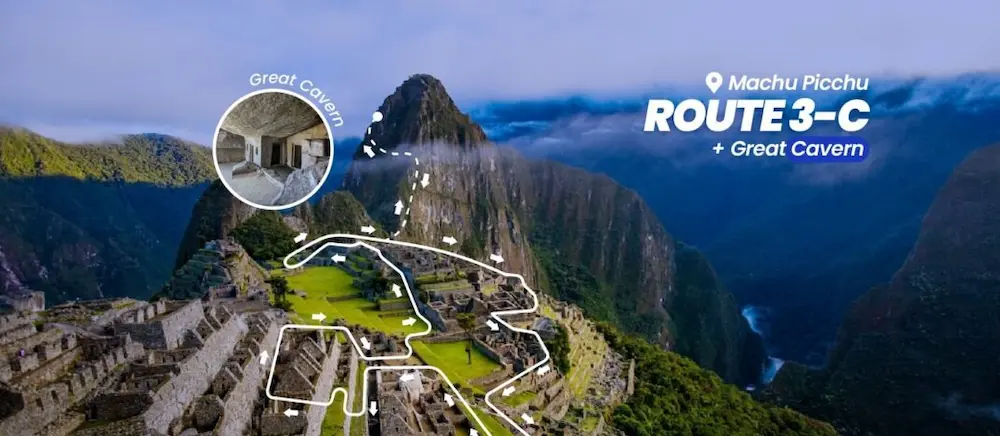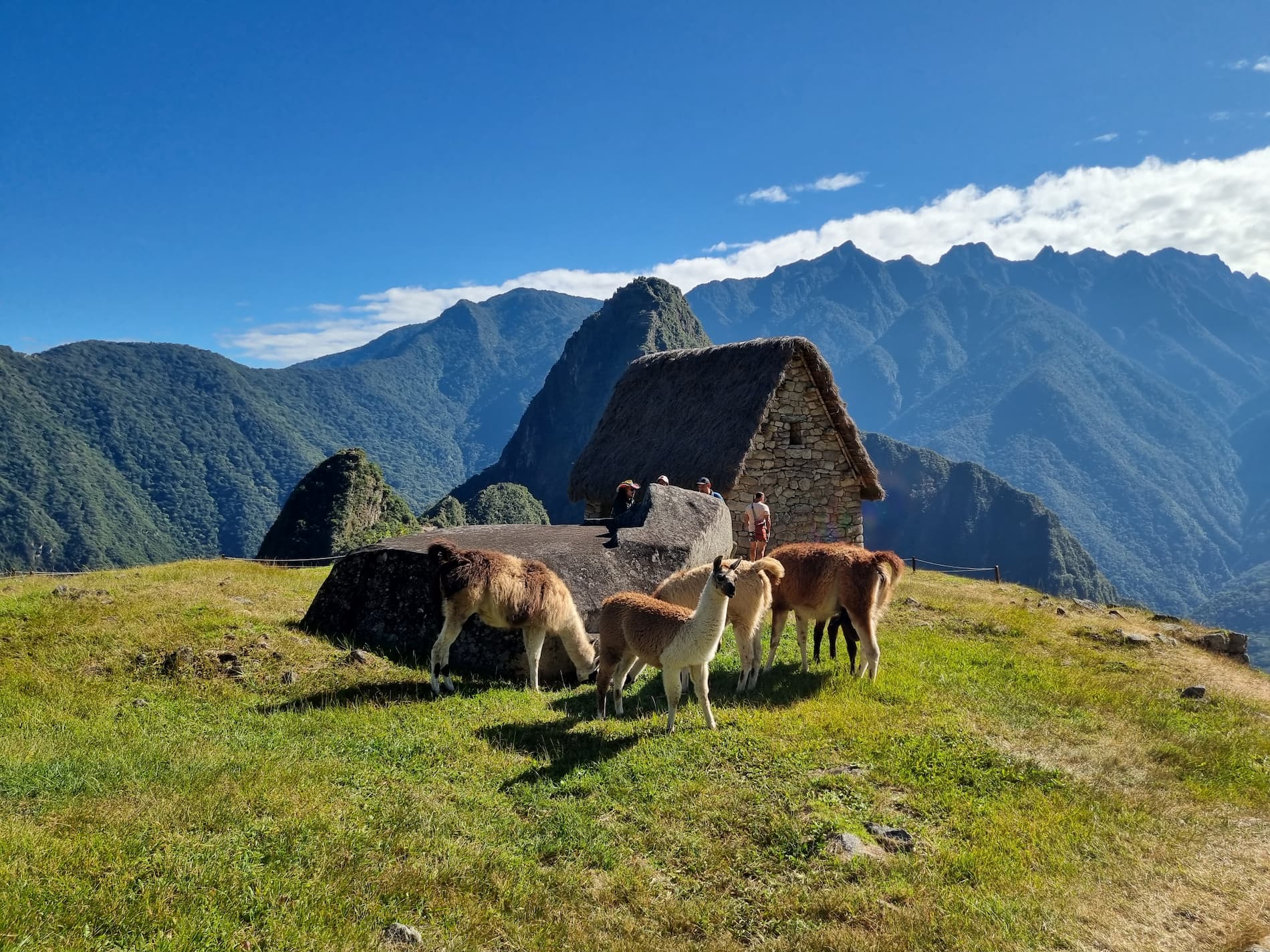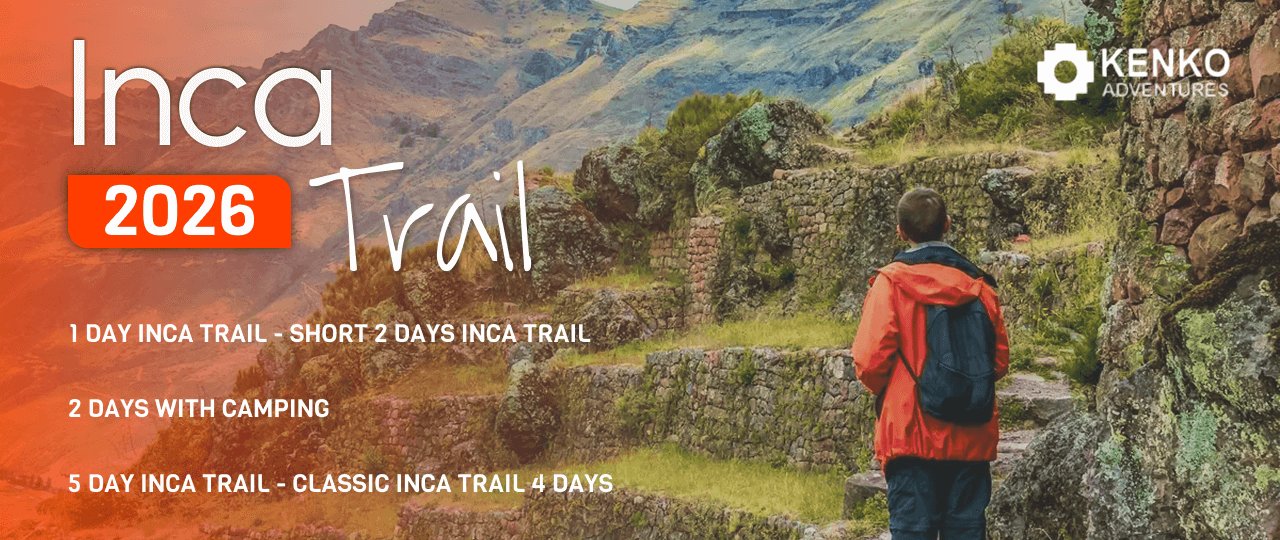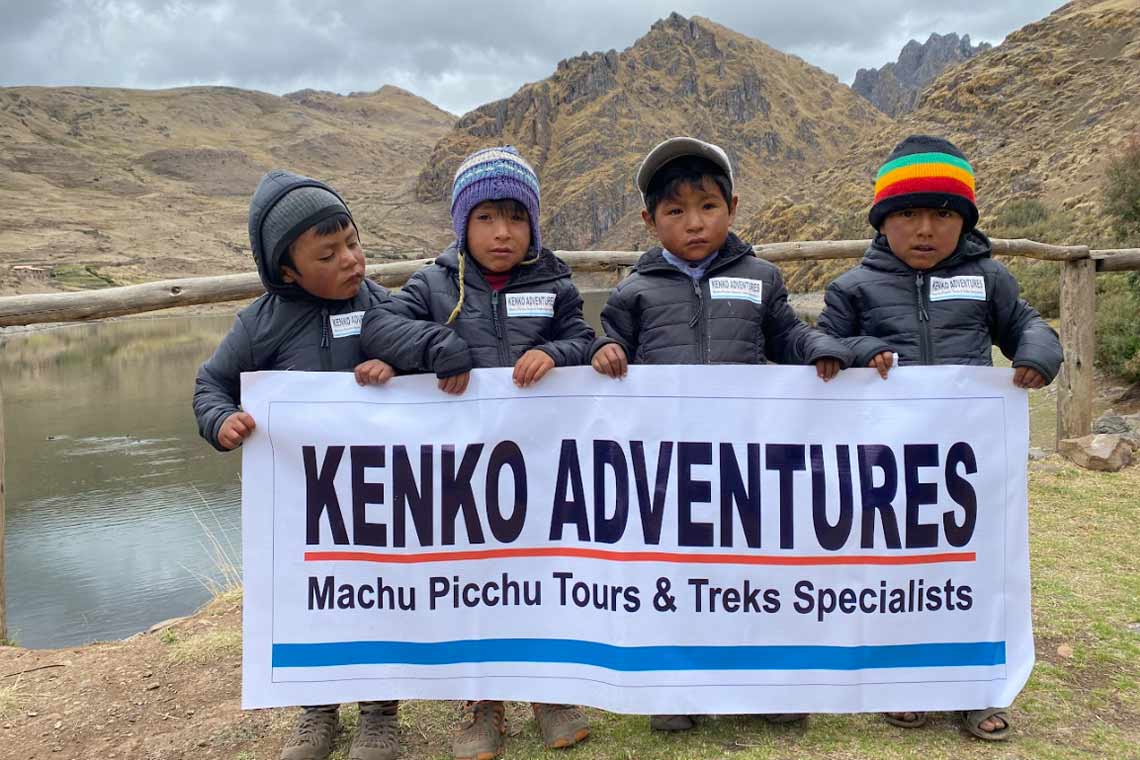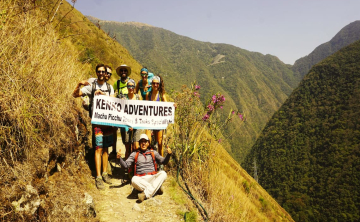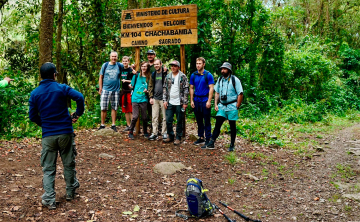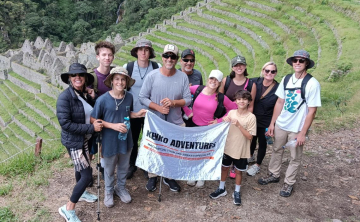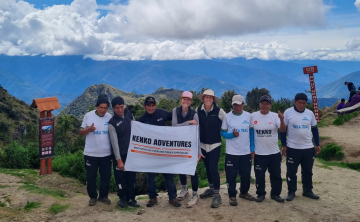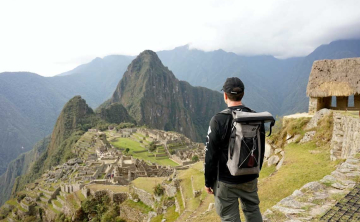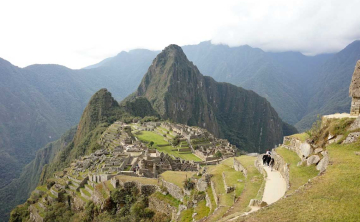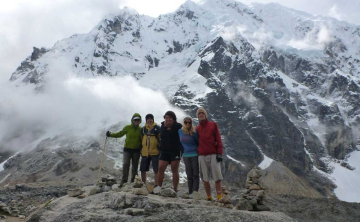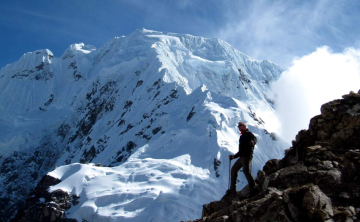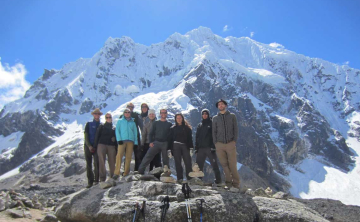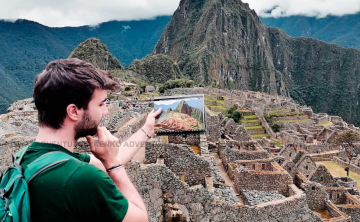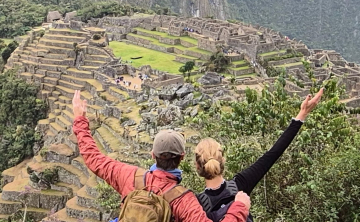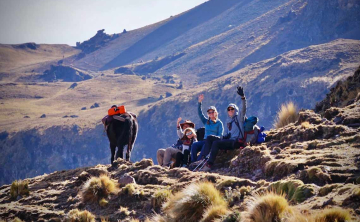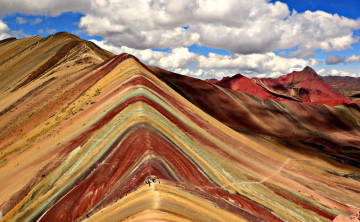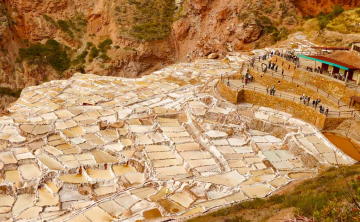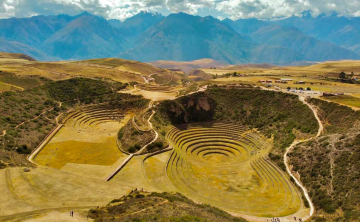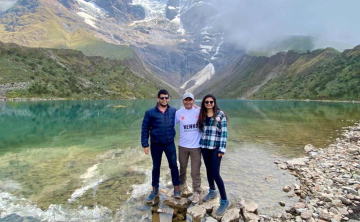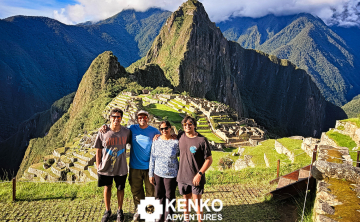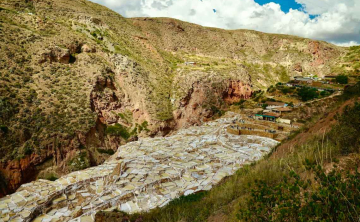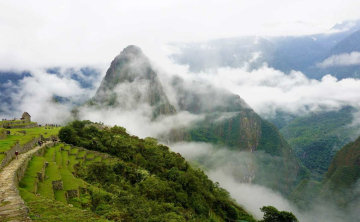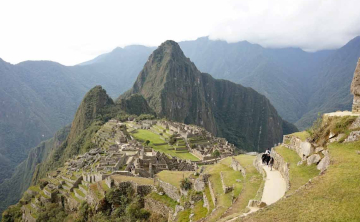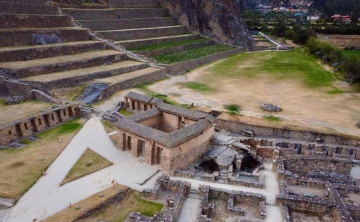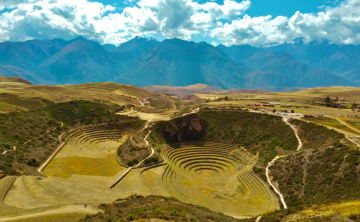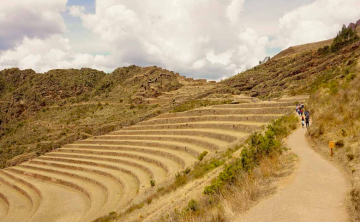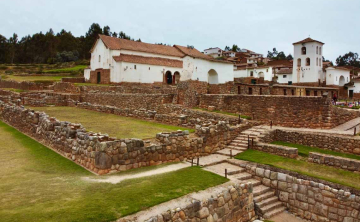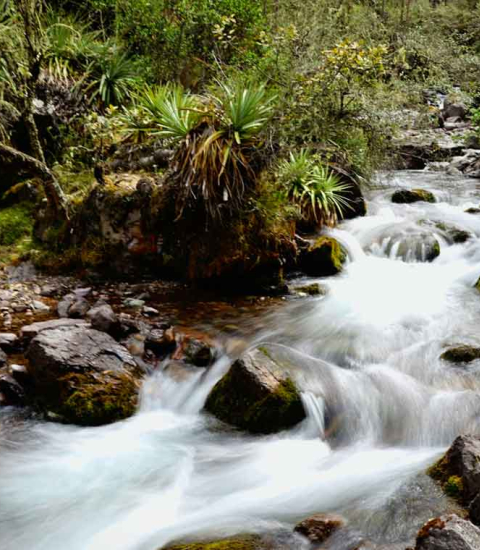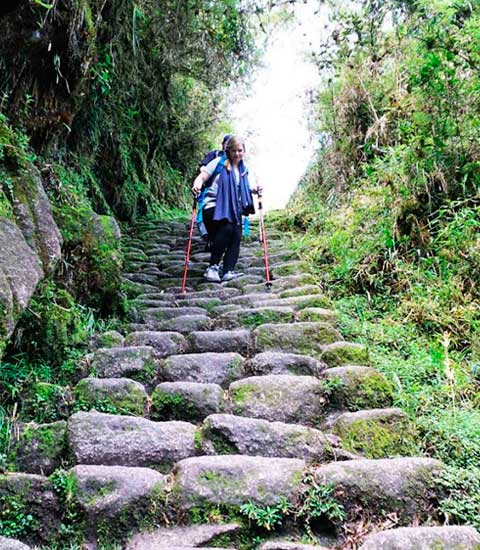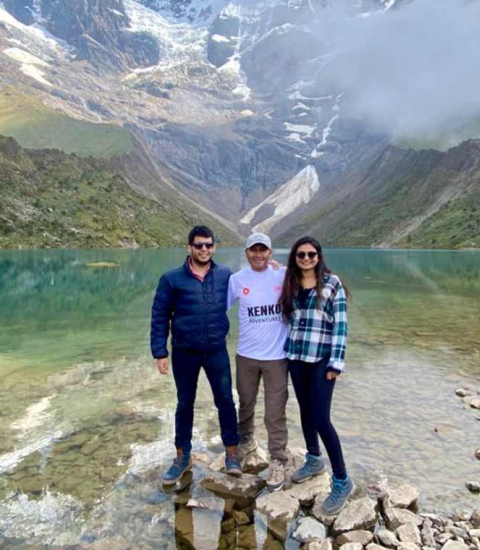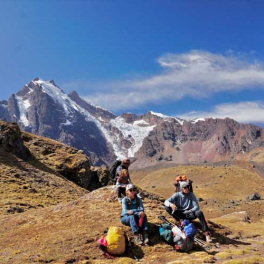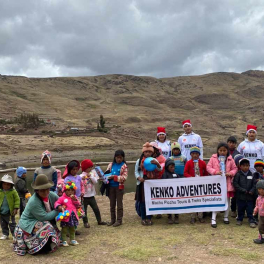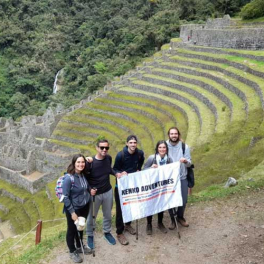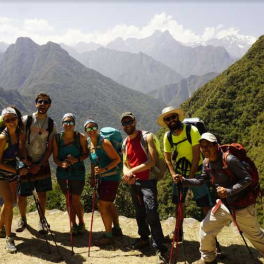New Machu Picchu Circuits 2026

Machu Picchu, one of the wonders of the world, continues to attract tourists with its impressive architecture and mysterious history. To ensure the integrity of the archeological site and improve the experience of the visitor, new circuits have been established in 2026. Ensuring that each visitor finds the route that suits their interests and abilities, these new tours offer a variety of perspectives and challenges.
The Ministry of Culture of Peru has reorganized Machu Picchu's tourist circuits, reducing them from five to three principal circuits, each of them with multiple sub-routes, effective since June 1, 2024. The purpose of these changes is to preserve the archeological site for the future generations and to improve the visitor experience. We offer you a detailed description of the new circuits, their routes and the expectations for each of them.
What are the new Machu Picchu circuits 2026?
The Machu Picchu Circuits 2026 are an updated system of official routes that determine how visitors move through the archaeological sanctuary. These circuits are not only designed to organize tourist traffic, but also to protect the most fragile areas of the Inca city and ensure that the daily flow of travelers does not damage its ancient structures.
Each circuit offers a different experience: some focus on panoramic viewpoints, others explore the core archaeological areas, while others provide shorter and more accessible paths. For 2026, all routes have been redesigned based on conservation studies, mobility analysis, and new criteria for sustainable tourism.
In short, the Machu Picchu Circuits 2026 represent a complete update to the visitor system, created to respond to increasing tourism demand and the need to preserve one of the world’s most iconic archaeological sites.
Evolution of the routes and why they change every year
The circuits evolve because Machu Picchu is not a static museum—it’s a living archaeological site that reacts to human impact. The sanctuary receives thousands of visitors every day, and constant foot traffic can wear down staircases, compact the ground, erode terraces, and cause vibrations that affect stone structures.
For this reason, teams from the Ministry of Culture and conservation specialists analyze the site on a regular basis, reviewing:
- Levels of wear on paths and archaeological structures
- Areas where tourist congestion is recurrent
- Seasonal patterns and movement behavior
- How vibrations and pressure affect walls and sacred spaces
When a particular zone shows signs of stress or needs relief, the circuits are modified. This is why updates are announced every few years—to ensure the sanctuary remains safe, stable, and enjoyable for visitors.
Objectives of the new 2026 tourism proposal
The 2026 proposal focuses on four core objectives:
1. Protecting vulnerable archaeological areas: Certain structures and pathways have shown increased wear. The new circuits reduce heavy foot traffic in these areas and redirect visitors to zones that can handle more movement.
2. Improving visitor distribution: The updated design aims to eliminate bottlenecks, minimize cross-traffic, and ensure smoother, more comfortable circulation throughout the sanctuary.
3. Modernizing access and supervision: Clearer signage, stronger access control, and better flow monitoring will help manage visitor loads during peak hours.
4. Offering a more coherent and educational route: The new layout is more linear and logical, allowing guides to deliver a more structured narrative about the history and significance of Machu Picchu.
Machu Picchu circuit 2026 | New Machu Picchu Routes
Planning your visit with the new Machu Picchu circuit 2026 system is essential if you want to explore the sanctuary without stress. Peru’s Ministry of Culture has updated the Machu Picchu Circuits to control visitor flow, protect the archaeological site, and offer more specialized routes for different types of travelers. These new Machu Picchu routes organize the experience into mountain hikes, panoramic terraces, and lower-ruin circuits—each with its own duration, availability, and entry rules.
Whether you’re looking for the classic postcard viewpoint, a challenging mountain trail, or a shorter circuit for a tight schedule, understanding the 2026 system will help you choose the option that truly fits your trip. Below you’ll find a complete breakdown of every route, including duration, restrictions, and advance booking recommendations.
Circuit name | Includes | Availability | Estimated duration | Age restriction | Advance purchase |
|---|---|---|---|---|---|
1A Machu Picchu Mountain route | Classic Machu Picchu viewpoint and Machu Picchu mountain hike | All year | 6 hours | All ages | 2 months in advance |
1B Upper Terrace route | Classic Machu Picchu viewpoint only | All year | 2.5 hours | All ages | 1 month in advance |
1C Intipunku (Sun Gate) route | Classic viewpoint + Sun Gate | Seasonal (Jun 1–Oct 15) | 4 hours | All ages | 2 months in advance |
1D Inca Bridge route | Classic viewpoint + Inca Bridge hike | Seasonal (Jun 1–Oct 15) | 3 hours | 18+ years | 2 months in advance |
2A Designed route | Classic viewpoint + most of the site | Year-round | 2.5–3 hours | All ages | 3 months in advance |
2B Lower Terrace route | Classic viewpoint (from slightly higher) + most of the site | Year-round | 2.5–3 hours | All ages | 3 months in advance |
3A Waynapicchu Mountain route | Lower ruins + Waynapicchu Mountain hike | Year-round | 4 hours | 18+ years | 2 months in advance |
3B Lower Ruins Designed route | Lower ruins only | Year-round | 1–1.5 hours | All ages | 1–1.5 months in advance |
3C Great Cavern route | Lower ruins + Temple of the Moon hike | Seasonal (Jun 1–Oct 15) | 5 hours | 18+ years | 2 months in advance |
3D Huchuy Picchu route | Lower ruins + Huchuy Picchu hike | Seasonal (Jun 1–Oct 15) | 2.5–3.5 hours | 18+ years | 2 months in advance |
Circuit 1: Panoramic
This circuit is perfect for visitors who want to experience breathtaking views of Machu Picchu without entering the urban sector. It focuses on strategic viewpoints that showcase the majesty of the citadel from different angles, making it ideal for photography, nature appreciation, and a serene exploration of the site.
Route 1-A: Machu Picchu Mountain
This route covers the upper terrace of Machu Picchu. It begins at the Guardian's House, where visitors can take the traditional postcard photo of Machu Picchu. The hike to the top of the Machu Picchu Mountain takes four hours (round-trip) and is surrounded by lush vegetation. For trekking enthusiasts of all ages, this route is ideal. It is open all year round.
This route is designed for those who enjoy hiking and panoramic landscapes. Starting at the Guardian’s House, where you can capture the iconic postcard view of Machu Picchu, the trail ascends to the summit of Machu Picchu Mountain. The round-trip hike lasts approximately four hours and passes through lush vegetation, offering spectacular views of the Urubamba River, the surrounding mountains, and the entire citadel below. The trail is suitable for trekking enthusiasts of all ages and is open throughout the year, providing a rewarding experience with each season’s unique scenery.
Route 1-B: Upper Terrace
Route 1-B, one of the most accessible options among the Machu Picchu Circuits 2026, is ideal for travelers who want to enjoy the sanctuary’s most iconic panoramic views without engaging in a strenuous hike. As part of the New Machu Picchu Routes, this terrace-based circuit highlights the architectural genius of the Incas, who built agricultural platforms that double as extraordinary viewing points.
The Upper Terrace Route provides a smooth and visually rich experience, ideal for photography lovers, families, and travelers with limited time. From this elevated vantage point, visitors can appreciate the full outline of the Inca citadel, the winding path of the Vilcanota River, and the surrounding geological formations that shaped the landscape. Because it balances cultural interpretation with breathtaking scenery, Route 1-B stands out as one of the most complete panoramic experiences of the 2026 system.
Route 1-C: Intipunku: Sun Gate
Route 1-C offers a powerful blend of history, landscape, and Inca spirituality, connecting modern visitors with one of the most meaningful entrances to the ancient citadel: Intipunku, or the Sun Gate. As part of the redesigned Machu Picchu circuit 2026, this route follows a section of the original Inca Trail, allowing travelers to walk the same path once used by messengers, pilgrims, and noble visitors arriving from the Sacred Valley.
This route is perfect for those who want a moderate hike combined with cultural interpretation and extraordinary views. The ascent gradually reveals the terraces, mountains, and sacred spaces that framed the Inca worldview. Upon reaching the Sun Gate, the panoramic opening toward the citadel becomes a symbolic moment—one that captures both the grandeur of Machu Picchu and the significance of the New Machu Picchu Routes, which aim to preserve these ancient paths while making them accessible to visitors.
Route 1-D: Inca Bridge
Route 1-D is one of the most peaceful and historically intriguing experiences within the Machu Picchu Circuits 2026. Designed for travelers who prefer a light walk with strong cultural value, this scenic trail leads toward the Inca Bridge—a remarkable engineering feature built along the mountain cliff to supervise and protect one of the hidden entrances to the citadel.
The route showcases the Incas’ deep understanding of their environment, blending defensive architecture with natural rock formations. As part of the New Machu Picchu Routes, this circuit highlights how the Incas used geography strategically while maintaining harmony with the surrounding landscape. The path provides impressive views of the Vilcanota Valley, lush transitional forests, and towering apus, making it an exceptional choice for visitors seeking a short but meaningful encounter with Machu Picchu’s cultural and environmental richness.
Circuit 2: Traditional Machu Picchu
This circuit provides the opportunity to take a different view of Machu Picchu and explore the urban area of the citadel.
Route 2-A: Designed route
Route 2-A, part of the Inka City of Machu Picchu Circuit, offers one of the most complete cultural experiences within the Machu Picchu Circuits 2026. This path has been carefully structured to help visitors understand how the Incas designed, lived in, and ritualized their sacred city. Unlike the panoramic circuits, Route 2-A focuses on the architectural heart of Machu Picchu, guiding travelers through ceremonial plazas, agricultural sectors, storage facilities, and residential compounds.
As one of the key New Machu Picchu Routes, this designed circuit provides a deep look into how the Incas adapted their construction techniques to the rugged Andean terrain, creating a city that blends seamlessly with its natural surroundings. It highlights both functional spaces—such as qolqas, platforms, and housing clusters—and spiritual centers including temples, sacred stones, and ritual enclosures. Route 2-A is perfect for travelers seeking a well-rounded exploration that connects engineering, agriculture, religion, and astronomy within a single guided experience.
Route 2-B: Lower Terrace
Route 2-B, known as the Lower Terrace Route, is one of the most immersive options within the Inka City Circuit and a central component of the Machu Picchu circuit 2026 experience. This route is designed for visitors who want to understand the city’s dual identity: an agricultural powerhouse adapted to steep mountainsides and a ceremonial urban center filled with temples, plazas, and symbolic structures. By beginning in the agricultural terraces and moving toward the urban core, travelers gain a chronological sense of how life in Machu Picchu functioned from the ground up.
Within the New Machu Picchu Routes, Route 2-B stands out for its balance of practicality and spirituality. Visitors encounter quarries that supplied the stone for the city, terraces that reveal ingenious agricultural adaptation, and sacred spaces such as the plaza, water mirrors, and ritual enclosures. This route emphasizes how the Incas organized their city to honor the landscape, manage natural resources, and support their cosmological beliefs. It is ideal for travelers who want a detailed, holistic view of Machu Picchu’s architecture, daily life, and sacred worldview within a single circuit.
Circuit 3: Royalty Circuit
Through the urban region of Machu Picchu and the nearby mountains, this circuit offers the visitors a unique experience.
Route 3-A: Huayna Picchu Mountain
Route 3-A is one of the most iconic and adventurous experiences within the Circuit of the Kingdom, designed for travelers seeking a combination of physical challenge, sacred landscapes, and panoramic views. As part of the New Machu Picchu Routes 2026, the Waynapicchu Mountain Route stands out for its steep stone stairways, narrow jungle paths, and dramatic cliffs that frame the ascent to one of the most legendary peaks in the Andes.
This route is ideal for visitors who want to connect directly with the ancient Inca worldview. Waynapicchu was considered a site of spiritual and astronomical importance, and climbing it offers a unique opportunity to observe Machu Picchu from the vantage point used by Inca priests and guardians. The higher you ascend, the more the valley, the apus, and the city itself unfold beneath you—revealing why this location held such cosmic meaning within the Machu Picchu Circuits. For travelers with good physical condition, Route 3-A delivers one of the most memorable and transformative experiences in the sanctuary.
Route 3-B: Designed Route
Route 3-B, part of the Circuit of the Kingdom, is tailored for travelers interested in exploring the ceremonial and elite urban core of the Inka City of Machu Picchu. Unlike the panoramic routes focused on scenic viewpoints, this circuit dives directly into the sacred and aristocratic sectors once used by the Inca nobility. It is one of the most culturally rich options within the Machu Picchu Circuits 2026, offering a curated experience through temples, ritual spaces, and finely crafted architectural compounds.
This route allows visitors to appreciate high-status areas such as ceremonial shrines, agricultural terraces that sustained the city, and symbolic constructions like the Temple of the Condor. These stops highlight the Incas’ ability to integrate engineering, religion, and astronomy within a single urban layout. Route 3-B is perfect for travelers seeking a deeper understanding of Inca spirituality, elite architecture, and the sophisticated system of beliefs that shaped the layout of the Royal District.
Route 3-C: The Great Cavern
Route 3-D, the Huchuypicchu Route, is a compact yet deeply rewarding trail within the Circuit of the Kingdom, offering a shorter ascent that still delivers exceptional views and a meaningful connection with the sacred landscape of Machu Picchu. As part of the Machu Picchu circuit 2026, this route was designed for travelers seeking a moderate alternative to the demanding Waynapicchu climb, without sacrificing the panoramic beauty that defines the New Machu Picchu Routes.
Huchuypicchu rises just above the main archaeological complex, giving visitors an elevated but accessible lookout point that reveals the harmonious geometry of the Inca city in relation to the surrounding mountains. The trail is ideal for travelers with limited time or those who prefer a manageable climb while still capturing unique photos and perspectives. Compact, scenic, and culturally rich, Route 3-D is one of the best options for visitors who want a balanced experience between adventure, landscape, and accessibility.
Route 3-D: Huchuy Picchu, the mountain
Huchuypicchu Route offers a shorter yet rewarding hike that leads directly to Huchuypicchu Mountain, which is part of the Waynapicchu massif. This new route part of the Machu Picchu circuits provides an alternative for those looking to experience a brief but exhilarating climb, reaching an elevated viewpoint nearly 100 meters higher than the main Inca city site. The trail is less challenging than the full Waynapicchu hike, making it a great option for visitors with limited time or those seeking a more moderate ascent.
From the summit of Huchuypicchu, visitors are treated to an impressive view of the Imperial City and its surrounding landscape. The vantage point offers a fresh perspective of the iconic Inca city, allowing visitors to appreciate the layout and structures from a different angle. The view encompasses the expansive mountain ranges and lush valleys that form the dramatic backdrop of Machu Picchu, providing a perfect opportunity for photography and reflection.
This route is ideal for those who want to take in the beauty of Machu Picchu from an elevated position without committing to the more demanding Waynapicchu climb.
Main changes in the Machu Picchu circuits for 2026
The latest update introduces several modifications designed to optimize traffic, protect fragile zones, and enhance the visitor experience. These changes affect how you enter, move, and interact with the site. Here’s what you need to know before planning your visit.
Modifications to visitor flow
One of the biggest updates is the redesign of how travelers move through the sanctuary. In past years, several circuits intersected in key areas, creating congestion and slowing down tours. To avoid this:
- One-way routes have been established
- Clear separation between upper and lower circuits is now enforced
- Wider spacing has been introduced between rest areas
- Visitor traffic will follow a more predictable rhythm
These improvements allow for a smoother, safer, and more organized experience.
New rules for access and time inside the sanctuary
Access regulations have been tightened to protect the site. Key changes include:
- Visitors must enter strictly at the time printed on their ticket
- Once inside, you cannot switch circuits or backtrack
- Time inside the sanctuary will be more closely monitored
- Re-entry will not be allowed after completing the chosen route
These measures prevent overcrowding and help control impact on delicate structures.
How photo spots and viewpoints have been reorganized
Photo spots are a fundamental part of the visitor experience, so the redesign carefully balanced iconic views with preservation needs.
Key adjustments include:
- Relocating some viewpoints to reduce erosion
- Adding new alternative photo spots in less congested areas
- Temporarily restricting access to saturated viewpoints during peak hours
- Separating rest zones from photo areas to improve overall circulation
The goal is to ensure tourists can still capture memorable photos while protecting vulnerable archaeological spaces.
Advantages of the new Machu Picchu circuits
The 2026 circuits offer multiple benefits for tourists, guides, and conservation specialists. From smoother mobility to clearer routing and better protection of the archaeological site, these updates significantly improve the overall experience. Discover the key advantages of the redesigned system.
Better distribution to avoid overcrowding
The redesign of the circuits aims to eliminate the frequent bottlenecks that used to occur at key points within the sanctuary. The 2026 layout separates high-traffic areas, introduces one-way pathways, and organizes visitor flow in a more controlled manner.
Because of this, groups no longer accumulate in narrow stone stairways or strategic viewpoints, allowing visitors to move forward at a comfortable pace rather than being forced to stop for long periods. This improvement enhances both safety and overall experience.
Additionally, the clearer separation between upper and lower routes ensures that groups following different circuits do not intersect unexpectedly—something that previously caused confusion and delays.
A clearer and more fluid visitor experience
With better signage, defined paths, and more intuitive route design, visitors can now follow their circuit without interruptions or uncertainty. The 2026 circuits have been redesigned to feel more natural and easy to navigate, reducing the cognitive load on travelers who may already feel overwhelmed by the altitude, climate, or the excitement of the visit.
This means:
- Visitors know exactly where to go and what areas correspond to their circuit.
- Guides can follow clearer narratives without being forced to adapt to physical obstacles or overlapping routes.
- Photo spots, rest areas, and directional signs are separated and structured to prevent confusion.
Overall, this creates a smoother, more enjoyable experience that allows travelers to focus on the beauty of the site rather than worrying about getting lost or stuck in the flow.
Protection of heritage and optimized visitor transit
One of the top priorities for the redesign was the long-term preservation of Machu Picchu. The sanctuary’s staircases, terraces, and stone pavements are extremely sensitive to foot traffic and vibration. The new circuits help reduce excessive pressure on these fragile areas.
Key conservation benefits include:
- Redirecting heavy foot traffic away from sections showing signs of erosion.
- Protecting narrow staircases that are weakened by continuous use.
- Allowing sensitive archaeological areas to “rest” by limiting tourist access.
- Creating safer passages where visitors can walk without touching or leaning on ancient stone walls.
By organizing transit more efficiently, the circuits contribute directly to the conservation of the site for future generations.
Official visiting rules for the Machu Picchu circuits 2026
To preserve the sanctuary and guarantee a safe, organized visit, several rules will be strictly enforced in 2026. Understanding what is allowed, what is prohibited, and how movement works inside the circuits will help you avoid issues and enjoy a hassle-free experience.
Schedules, access, and entry control
Entering the sanctuary will be strictly tied to the time printed on your ticket. Visitors who arrive late risk being denied entry, as time slots are carefully managed to prevent overcrowding.
Once inside, the flow is tightly monitored, and each circuit has a recommended duration that must be respected. This structured system ensures a constant, controlled movement of groups throughout the day.
Allowed and restricted items
To protect the archaeological site and guarantee smooth mobility, the following rules apply:
Allowed items:
- Small backpacks (within size limits established by the Ministry of Culture)
- Water bottles
- Cameras or smartphones
Prohibited items:
- Large tripods or stabilizers
- Drones
- Food or bulky containers
- Walking sticks (unless medically justified)
- Umbrellas (only small rain ponchos are allowed)
These regulations are designed to prevent accidents, reduce environmental impact, and maintain the sanctuary’s cleanliness and safety.
Movement rules inside the circuits
Once you start your chosen circuit, you cannot return to a previous point or switch to another route. This rule ensures that all visitors follow the established flow and prevents crossings that could disrupt the rhythm of the circuits.
Other movement rules include:
- Always follow the one-way path established for your circuit.
- Do not leave the marked trails or enter restricted archaeological areas.
- Do not stop for extended periods in narrow passages.
- Follow the instructions of park rangers at all times.
These regulations maintain order, protect vulnerable structures, and guarantee a safe, high-quality experience for every visitor.
Conclusion
The new circuits of Machu Picchu in 2024 provide the tourist with a variety of perspectives and experiences of this ancient Inca city. These tours offer something for everyone, whether you are looking for a full exploration of Machu Picchu's architecture and history or a challenging hike. To get the most out of this World Heritage Site, plan your visit in advance and select the tour that best suits your interests.

